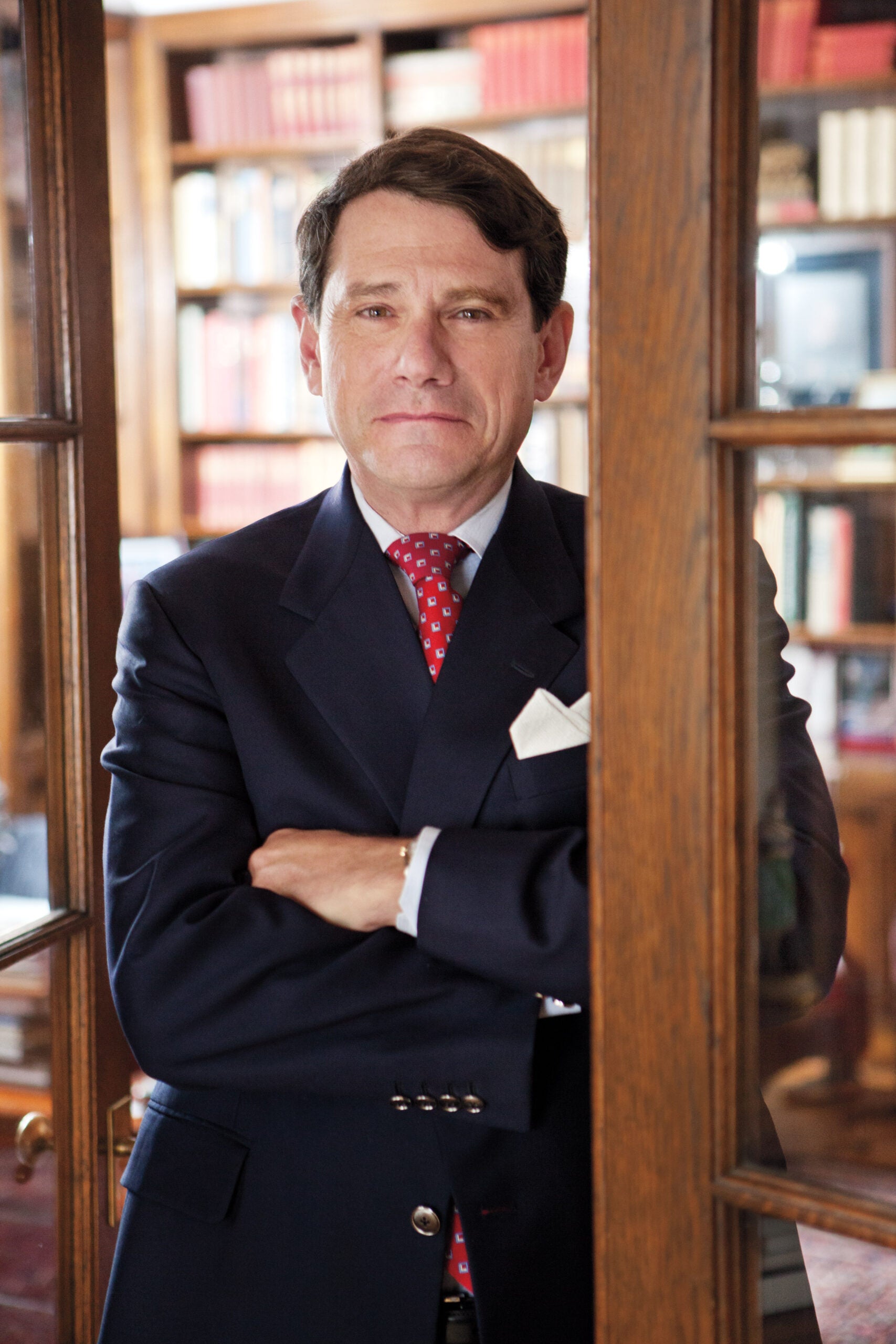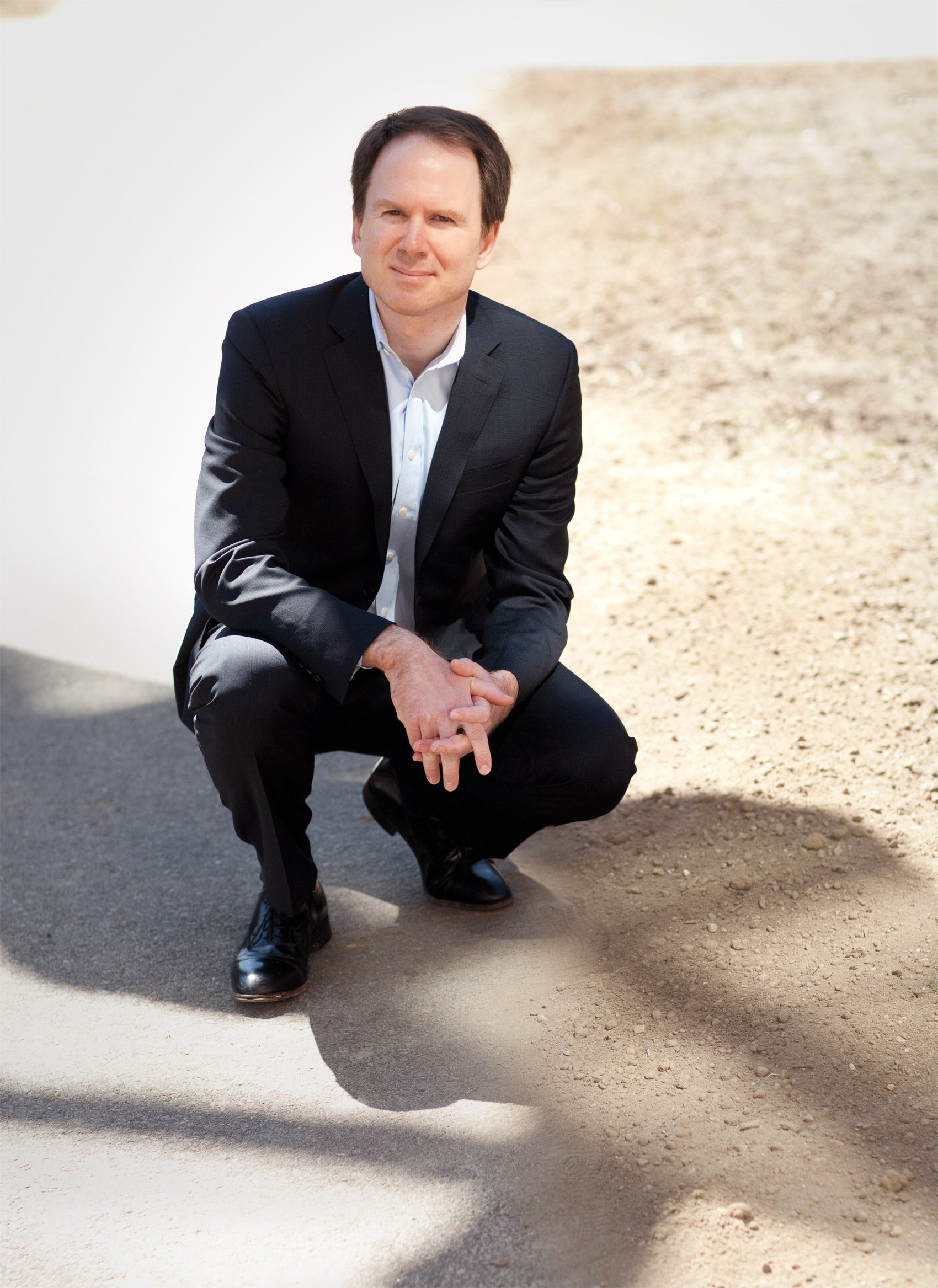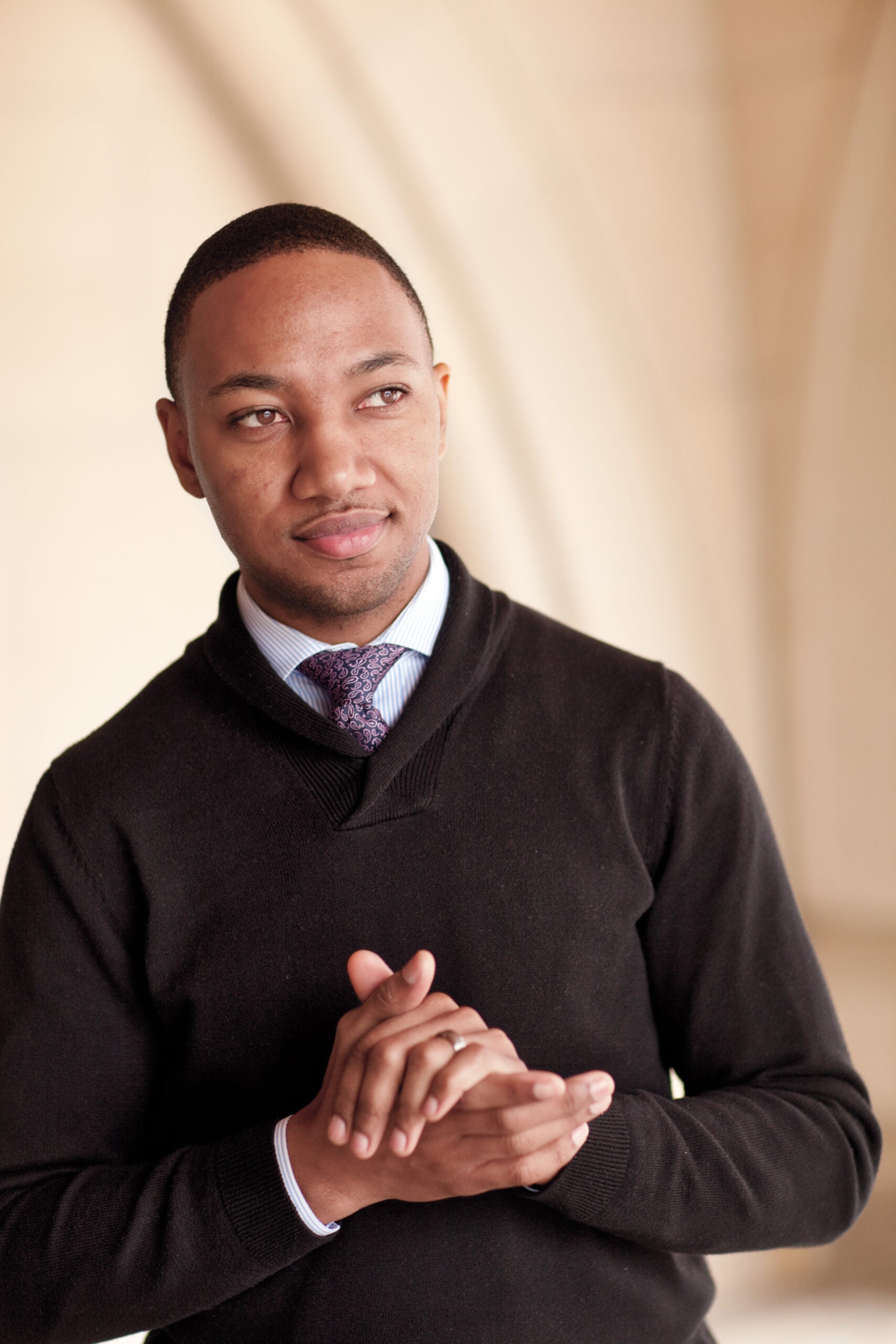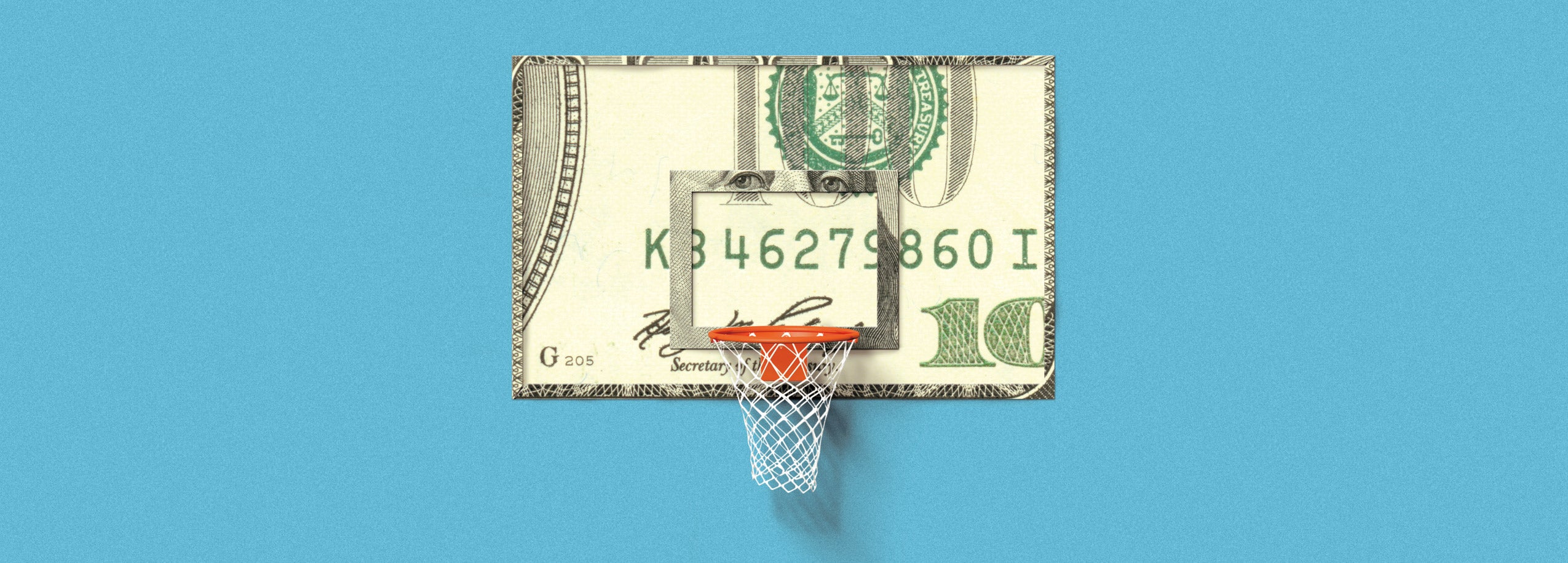What do you call it when an organization makes more than a billion dollars in a single month using unpaid labor? Some call it exploitation; others, opportunity—but most of the nation calls it March Madness.
In 2013, the national men’s college basketball tournament, held each March, raked in $1 billion in television ad revenue alone for the National Collegiate Athletic Association, the nonprofit organization that governs college sports. Sports—particularly the big-ticket draws of football and men’s basketball—is a $12 billion-a-year industry for colleges, universities, and the N.C.A.A., through TV revenue, endorsements, and merchandising of everything from jerseys to video games featuring star players, never mind increased alumni donations and ticket sales prompted by winning teams.
Billions in licensing fees and TV revenue are at stake in O’Bannon v. the N.C.A.A.
And while the schools, coaches and N.C.A.A. take in millions—University of Alabama football coach Nick Saban will earn $7 million this year—the players responsible for this cash cow are banned from sharing in the bounty. Many get scholarships that may pay for most—but not all—of their college costs, but in return, sports take up at least 40 hours a week, the players often miss classes for games, and they take courses tailored to keep them eligible to play rather than to position them for career success. With the N.C.A.A.’s near-monopoly on students’ path to the pros (only three U.S.-born players have made it to the NBA or NFL without the benefit of the college draft since 2006), if student-athletes get hurt, can’t make the required grades, or violate N.C.A.A. rules—say, by accepting a free dinner from a graduate—they lose not only their scholarships but the chance for a professional career.
Yet neither the N.C.A.A. nor any given school is on the hook for a student’s medical or other expenses if he’s injured; indeed, the concept of amateurism was promoted by the N.C.A.A. specifically to protect itself from liability, according to Peter Carfagna ’79, a Covington and Burling Distinguished Visitor at HLS, where he teaches several courses on sports law and is director of the popular Sports Law Clinic.

“You’re an amateur athlete, which means you are not an employee, which means you’re not entitled to workers’ comp or other benefits if you get a concussion,” says Carfagna, whose clinic has placed more than 100 HLS students in externships with major league sports teams, professional players unions and sports agencies since being launched in 2007. “So you get a scholarship—and you take your chances.”
But now a series of major legal efforts—including a number of lawsuits and an effort to unionize college players—may forever change the face of college sports. “They haven’t quite gotten into the Alamo,” Carfagna says of those challenging the status quo, “but they’re scaling the walls, and the walls are partially coming down.”
The week that March Madness began this year, high-profile sports attorney Jeffrey Kessler filed a federal lawsuit against the N.C.A.A. and the five largest college conferences on behalf of a group of college football and basketball players, claiming that capping their compensation at the value of a scholarship violates antitrust laws. In essence, the suit seeks to allow student-athletes to be paid. Another suit had been filed just a few weeks earlier by a former college football player, seeking full compensation for the cost of attending college, since athletic scholarships don’t cover all expenses.
Billions in licensing fees and TV revenue are at stake in O’Bannon v. the N.C.A.A., an antitrust class-action lawsuit in which former Division I football and basketball players seek financial compensation for the ongoing commercial use of their images once they’ve graduated. The plaintiffs constitute a star-studded roster including former UCLA supernova Ed O’Bannon and 12-time NBA All-Star Oscar Robertson, whose popularity has earned millions for the N.C.A.A. and its schools for decades. “Is a scholarship grant sufficient consideration for an athlete, in perpetuity, in exchange for his publicity rights and/or the waiver of any benefits that an employee would otherwise get?” asks Carfagna.
Many schools have abysmally low graduation rates for their student-athletes
The case is so potentially groundbreaking that Carfagna is spending more and more time on it, both in his sports law classes and in his own practice as a sports lawyer. And the success of the case so far—it withstood a motion to dismiss—has emboldened others, says Michael McCann LL.M. ’05, a professor and director of the Sports and Entertainment Law Institute at the University of New Hampshire School of Law. “Lawyers are now thinking about the N.C.A.A. and how different areas of law intersect with N.C.A.A. business practices, which has likely given rise to these other legal attempts to force the N.C.A.A. to compensate student-athletes and former student-athletes with more,” says McCann, who is the legal analyst for Sports Illustrated and the on-air legal analyst for NBA TV.
Then, in late March, in a seismic decision, a regional director of the National Labor Relations Board ruled that football players at Northwestern University are employees with the right to unionize. While Northwestern is appealing to the full NLRB in Washington, D.C., the decision is a once-unthinkable breach in the previously impervious control that colleges and the N.C.A.A. (which isn’t a party to the action) have held over student-athletes. Among other demands, the Northwestern students want independent concussion experts present during games, funds to cover sports-related medical costs, and educational support to help former players graduate.

HLS Professor Benjamin I. Sachs, an expert on labor law and unions, who predicted the Northwestern players would prevail at the regional level, believes they have “a very good chance” to win—because, as critics have long insisted, student-athletes are primarily at school to play ball. Many schools have abysmally low graduation rates for their student-athletes: At top-ranked Syracuse, for example, only 45 percent of young men recruited to play basketball graduate; at the University of Connecticut, it’s 8 percent.
“It’s a farce to say student-athletes are being compensated with education when so many of them don’t graduate,” says Jimmie Strong ’14, who plans to become a sports agent and chose HLS in part because of its sports law program. “They’re in school to put their talents on display.” The N.C.A.A. wants professional-caliber athletes in school because they make the organization a lot of money, he adds, and pro teams want them there “because collegiate competition provides opportunities to compare high school stars with players of comparable talent and skill.”
Most gifted players are drafted into the NBA after just one year of college (there’s a required one-year gap between high school and pro basketball, three years for football), but “they don’t learn anything in one year of college, especially when they spend most of that year playing basketball,” continues Strong. “For many future professionals, after March Madness ends, so does class attendance.”
Even at Brown University, where athletic scholarships aren’t offered and sports are a dramatically different experience from that at a Big Ten school, “the fact I was a football player ruled every single thing I did in my life for four years,” says Nick Hartigan ’09, who holds the Ivy League record in career rushing touchdowns. “It really is a full-time job while you’re there.”
With ample evidence of the primacy of sports in student-athletes’ lives, Sachs says, “My analysis is there’s a very good chance that under the [NLRB’s] existing standards, these players will be considered employees. The relationship between the athletes and the universities is not a primarily educational one—it appears to be primarily economic, and if that’s the case, then under existing federal labor law, what we have are employees entitled to unionize.” There’s significant popular support for the students’ unionization effort that’s “deeper, broader and stronger than the kind of support you see for other union efforts,” Sachs notes. “I think this comes from a perception that student-athletes are getting a raw deal, and from the fact that colleges and universities are making an incredible amount of money and not treating the student-athletes fairly.”
College players receive no compensation, medical care or pension if they are injured
But while the broad issue is framed as a financial one, many believe it’s equally important that student players finally get a voice in shaping their college experiences. “When I was going to school, I was told which [courses] I couldn’t take because they would conflict with my [practice] schedule,” says Domonique Foxworth HBS ’15, a former NFL player and former president of the NFL Players Association, who has spoken to sports law classes at HLS. Since 98 percent of college hoops and football players never make it to the pros, he notes, “You’re forcing me to make decisions that will affect the rest of my life based on how it affects you.”
Meanwhile, a growing awareness of the terrible injuries many players suffer, especially concussive head injuries, has prompted at least two lawsuits. One is against the N.C.A.A. on a claim it fails to protect students or provide them redress. The other pits 4,800 former football players against the NFL; in January, the judge rejected the $765 million settlement agreement, fearing it’s not enough money to compensate everyone.

Unlike professional football and basketball players, college players receive no compensation, medical care or pension if they are injured. Getting hurt can mean getting tossed. “For many college athletes, medical injuries, including concussions, are a serious problem that can not only cause athletes to potentially lose their scholarships, but the injuries can also cause long-term health problems,” says Laura Lorenz ’14, who, through the HLS Sports Law Clinic, worked as an intern for the Sports Legacy Institute, a Boston-based nonprofit dedicated to solving the crisis of brain trauma in sports.
Yet with the N.C.A.A. holding all the cards, athletes often are afraid to protest. “There are definitely elements of servitude, when [players] have no control or power,” Foxworth says. “Often, especially in Big Sports, the kids are disproportionately black and from low-income families, and have even less opportunity than anyone else, so it’s not like they’ll say, ‘I’ll leave and go home and get a job.’ You’re taking advantage of a population.”
That’s why the system carries “the unmistakable whiff of the plantation,” writes Pulitzer Prize-winning author Taylor Branch, who also has spoken in Carfagna’s classes. In his new e-book about the N.C.A.A., “The Cartel,” Branch vilifies what he sees as the greed and hypocrisy that reward just about everyone in college sports except the players. And in a new documentary, “Schooled: The Price of College Sports,” produced by Foxworth, such sports luminaries as Frank Deford and Bob Costas are strongly critical of the system, insisting it must be reimagined so that players get a better deal.
Ultimately, if the NLRB decides that student-athletes are employees within the meaning of the law, the decision would apply to similarly situated athletes at other private schools and would require those schools to collectively bargain if the athletes vote to unionize, Sachs says. (The Northwestern players cast secret ballots in late April on whether to unionize; results won’t be released until after the full NLRB rules.)
By contrast, at public schools, where most of the really big sports programs are found, state law governs. In some states, public employees have no right to unionize, but other jurisdictions have union-friendly labor laws that might give student-athletes an even better chance to organize than under federal law, Sachs explains.
HLS to lead law and ethics project on health of NFL players
A Harvard Medical School research study funded by the NFL Players Association will focus on identifying new approaches to diagnosing, treating and preventing injuries and illness in football players. As part of that initiative, Harvard Law School’s Petrie-Flom Center for Health Law Policy, Biotechnology, and Bioethics will lead a number of projects aimed at addressing legal and ethical issues influencing player health and well-being. They will be headed by HLS Professor I. Glenn Cohen ’03, faculty co-director of the center, and Executive Director Holly Fernandez Lynch.
Predicts McCann: “I think we’ll see student-athletes, especially those generating a lot of revenue, receive more compensation. It may not be money—it could be in deferred payment or a fund to pay student-athletes after they leave college—but I think there will be significant structural change between college students and their colleges when they play a sport.”

As he thinks ahead to representing clients, Strong is already coming up with creative recruiting alternatives to the college route, such as getting budding stars to play overseas during high school, which would allow them to be drafted into the NBA without having to sit out or attend college for a year.
“It’s essential for me to make sure people realize this is not just about money—it’s about giving young athletes the same opportunities that other young professionals enjoy, providing them with a plethora of viable alternatives to N.C.A.A. competition, which is an almost mandatory track for even the best of prospects,” says Strong. “For the most promising youngsters, mandatory tracks of this sort are unheard-of in most fields of human endeavor. The N.C.A.A. will be incentivized to give its student-athletes a seat at the bargaining table only if they have a variety of viable alternatives to collegiate competition—alternatives that prevent the N.C.A.A. from holding student-athletes’ hopes and dreams hostage.”
All of these efforts to challenge the current state of college sports can only benefit the 450,000 young people who participate each year, and who deserve, at the very least, a good education in exchange, critics say. “What I most hope would come out of these types of efforts is a much higher focus on graduation rates and preparedness for careers in the working world,” says Hartigan, an associate at a law firm in Washington, D.C.
“The N.C.A.A.’s goal shouldn’t just be making a bunch of money or making sure people aren’t doing random recruiting violations,” he continues. “Every student-athlete should feel fortunate to have gone to college; thousands of kids are striving to play in college. Your life should be better because you were able to achieve that goal—and I don’t think the system right now is structured in a manner where that is the case.”
